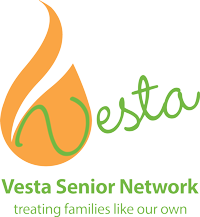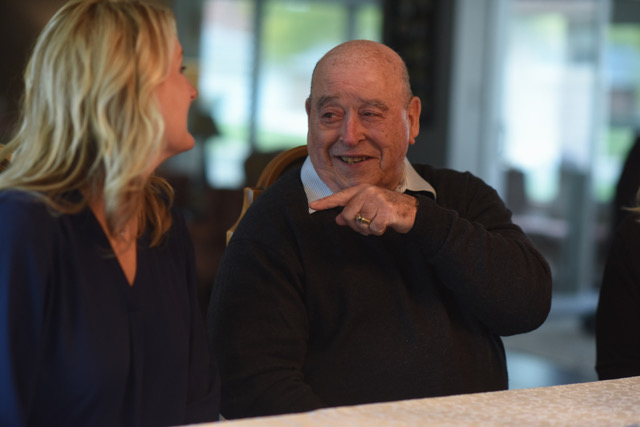Elder care options: senior living, independent living, assisted living, and nursing home options for our loved ones have changed dramatically in the last 20 years. As we have started living longer, an entire housing and senior care industry has blossomed working to address the needs of people living longer and better lives. This industry includes independent apartments and homes for those 55 and “better,” assisted living communities with apartment style living, and even homelike assisted living communities that are capable of taking care of people through the end of life. The old nursing home model is becoming a thing of the past.
However, many of us can only imagine the “old folks home” we visited as Girl Scouts at Christmas time, or when Auntie Jane lived in “the home.” The prison-like stereo-type of a nursing home or skilled nursing facility was illustrated perfectly in “The Golden Girls,” as Dorothy continually threatened to send Sophia back to Shady Pines for bad behavior. Let’s explore some of the common myths associated with Senior Living.
-
Assisted Living is My Last Home
The Myth: People look at senior living or assisted living as the end of the road. Sadly, this perception of any sort of senior living facility as a place to go to die permeates the thoughts of many of our older adults.
TheTruth: We now can get good care in a more homelike environment with more amenities than any generation before us. In our experience, people tend to live better and be healthier when they move into a community sooner than later. As we age and the market responds to need and demand, senior living communities are truly places to go LIVE! It is important to understand that the majority of us are going to need some sort of assistance as we get older. By moving when we are more able to learn new environments, avoid falls by eliminating stairs and improving access, we are improving our chances of being healthier for a longer time.
If one resists moving to a senior community long enough, the simple fact is that he or she is frequently sicker at the time of the move because she would not have received the care, socialization, and nutrition that she may have by moving into a care community. At Vesta Senior Network, the vast majority of our clients are in crisis when we are asked for help. They have been living in their homes, getting by with the help of family or sometimes hired caregivers, and their health begins to decline. Frequently, there is a fall that results in a hospitalization, a trip to rehab, a return home, and then before long, the same thing occurs. Often, we are meeting people when they have been yo-yoing between home, the hospital, rehab, and home several times. When we meet people at this time, their health has declined significantly, and the type of care they need is great. Because of this, the choices that they have are limited to the options that are available at that time and are limited by the amount of care that can be provided. Putting off the inevitable, is just that, inevitable. Being proactive and making choices while choices are still available is key.
-
I’ll Lose My Independence
The Myth: By moving into a senior community, I am losing my independence. Our elders are a proud generation of independent Americans. This generation takes great pride in having lived through some tough times. These people are frequently military veterans, and they are used to taking care of themselves. The idea of asking for help is not only foreign, but difficult. One gentleman said to me, “The bad part is you don’t know you’re old until you’re old.” That is the gospel truth for many! People frequently live in homes that they can no longer care for, homes that make life far more difficult than it needs to be. There are stairs up to the bedroom or down to the laundry, gutters that need to be cleaned out in the fall to avoid roofs leaking in the winter, and icy sidewalks that need to be tended. Many times, big houses that were perfect when raising families, are now a bunch of empty rooms that don’t get used. Yet, people fear that by giving all of this up, they are also giving up their independence.
The Truth: Being tied to something that is no longer a good fit is really giving up the independence a person might have if he or she had less to care for or worry about. By living in an environment with improved access, less stairs, and the ability to socialize with friends easily, one can truly make the most of each day and enjoy themselves, rather than fretting over overwhelming tasks and being alone most of the time. Making decisions while choices are still available is truly preserving independence.
-
I paid good money for that!
The Myth: The furniture and boxes of stored items that we have retained over the years are very valuable. We often see people “stuck” in limbo, not being able to make a decision or move forward because of all the things they’ve amassed in their lives. We are talking about people who may have been born during the Depression and were surely raised by parents who lived through it. The thoughts of “waste not, want not,” “save it for a rainy day,” “I may need it,” are common in our older adults. Our clients frequently see great value in their things and believe that others should, too.
The Truth: The value of anything is only what someone is willing to pay for it, and the younger generations really aren’t interested in “old stuff.” We live with a generation of young people who place value on experiences, not things. This younger population is the generation of tiny houses and world travel. Estate sales are far less profitable and successful than they were in years past. At the end of the day, people need to understand that their children and grandchildren might like a keepsake or two that are part of a cherished memory, but they don’t want furniture, crystal, china, and silver. The best way we can help is to find the most precious items that are tied to memories and make those the centerpiece of a new assisted living suite or senior living
apartment. Often a senior move specialist can help someone sort through the many boxes and items that have been saved over a lifetime. Sometimes there are ways to donate the other things to a charitable organization. Knowing that someone in need may have a use for the items is often healing for the individual.
-
I Can’t Afford Assisted Living
The Myth: Assisted Living is expensive. Sticker shock is a real thing when talking about getting care for an older adult because people aren’t typically looking at the total cost of living plus the cost of care.
The Truth: When seeking care for an elder, assisted living actually turns out to be one of the most economical ways to get care when a person needs it. The individual is no longer paying taxes, paying utilities or buying groceries. These costs are included in their monthly fees and are essentially shared by all those living in the community. In addition, the care is something like a “caregiver share.” Each individual is receiving the care her or she needs, but is sharing the cost of the caregiver with the others in the community.
-
I Enjoy Being Alone
The Myth: Many of us see our parents as the guy who went to work all day, came home to read the paper, and never talked much over dinner. He’s always been a loner, he’s not going to like being around people all the time.
The Truth: It is important to consider the cost of isolation and loneliness that our older adults experience. Even the most private person might feel lonely living alone when he has never done that before. He might not recognize or admit it, but research shows that the effects of social isolation and loneliness have a profound effect on the health of older adults. There is an increase in incidence of dementia, falls, and rehospitalization in older adults who are socially isolated and alone. The truth is, we are social beings, and people need people. Even if we aren’t joiners or active participants in social programs, we do better when we are around people.
At the end of the day, the total cost of staying at home needs to be evaluated completely. It really isn’t possible to compare the cost of staying at home to the cost of moving to senior living because it’s impossible to compare apples and oranges. It’s difficult for our older adults to think about spending their hard earned money in an “old folks home.” They want to leave a legacy for their children and grandchildren. The truth is, most of the children and grandchildren whom we work with are far more concerned about their loved ones’ wellbeing and quality of life than they are concerned about a big inheritance.


